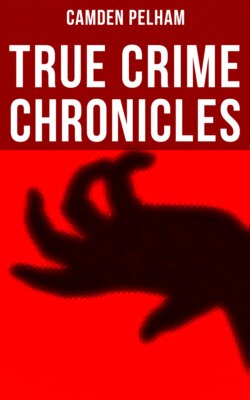Читать книгу True Crime Chronicles - Camden Pelham - Страница 17
На сайте Литреса книга снята с продажи.
WILLIAM LOWTHER AND RICHARD KEELE.
EXECUTED FOR THE MURDER OF EDWARD PERRY, A TURNKEY OF CLERKENWELL BRIDEWELL.
ОглавлениеTable of Contents
WILLIAM LOWTHER was a native of Cumberland, and being bound to the master of a Newcastle ship which traded to London, he became acquainted with low abandoned company in the metropolis. Richard Keele was a native of Hampshire, and served his time to a barber at Winchester; and on coming to London, he married and settled in his own business in Rotherhithe: but not living happily with his wife, he parted from her, cohabited with another woman, and associated with a number of disorderly people.
On the 10th of December, 1713, they were indicted at the Old Bailey, for assisting Charles Houghton in the murder of Edward Perry. The case was as follows:—The prisoners, together with two other desperate offenders, of the name of Houghton and Cullum, having been convicted of felony at the Old Bailey, were sentenced to be kept to hard labour in Clerkenwell Bridewell for two years. On their being carried thither, Mr. Boreman, the keeper, thought it necessary to put them in irons, to prevent their escape. This they all refused to submit to; and Boreman having ordered the irons, they broke into the room where the arms were deposited, seized what they thought fit, and then attacked the keeper and his assistants, and cruelly beat them. Lowther bit off part of a man’s nose. At this time, Perry, one of the turnkeys, was without the gate, and desired the prisoners to be peaceable; but, advancing towards them, he was stabbed by Houghton, and, during the fray, Houghton was shot dead. The prisoners being at length victorious, many of them made their escape; but the neighbours giving their assistance, Keele and Lowther, and several others, were taken and convicted on the clearest evidence.
Some time after conviction, a smith went to the prison to take measure of them for chains, in which they were to be hung, pursuant to an order from the secretary of state’s office; but they for some time resisted him in this duty.
On the morning of execution (the 13th December, 1713), they were carried from Newgate to Clerkenwell Green, and there hanged on a gallows; after which, their bodies were put in a cart, drawn by four horses, decorated with plumes of black feathers, and hung in chains.
